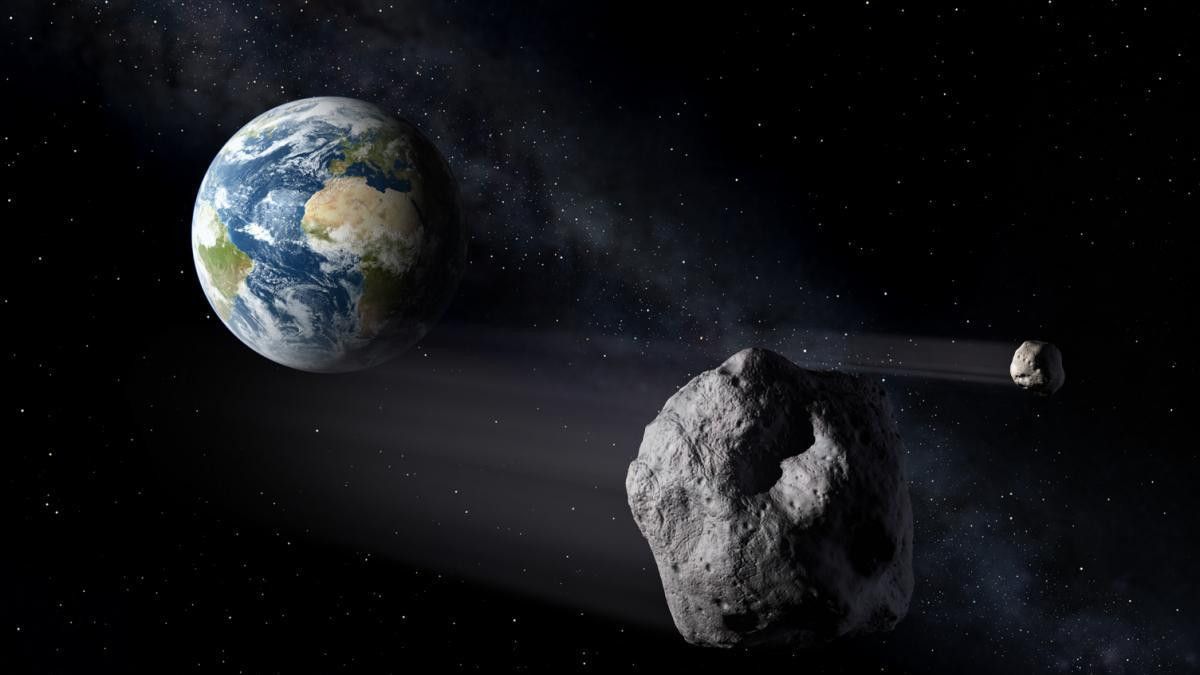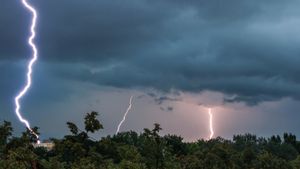JAKARTA - A giant asteroid is expected to approach Planet Earth on July 24 tomorrow. Because of its size, NASA has classified this asteroid in the dangerous category if it falls to Earth.
Launching Bussines Insider, NASA issued a warning about a space object called 2020ND flying at a speed of 48 thousand km / hour. The closest distance to this asteroid to Earth is about 0.034 AU (astronomical units) or five million kilometers.
The 2020 ND asteroid is classified as a Near-Earth Object (NEO) and has a potential hazard (Potentially Hazardous Asteroid / PHA). Not to mention its size, which is 160 meters in diameter or 50 percent larger than the London Eye giant Ferris wheel.
This parameter label assigned to asteroids has a potentially dangerous approach to Earth in the future. So far the 2020ND Asteroid has been recorded as having approached Earth four times, since it was discovered on July 17, 1945.
NASA itself has a space mission to anticipate the possibility of a dangerous space object approaching Earth. One of them is by launching a rocket unmanned spacecraft to crash into an asteroid. The mission is named DART (Double Asteroid Redirection Test) and will only be officially launched in 2021.
Potential DangerousEven though at this time, the 2020ND asteroid's trajectory is still very far from Earth, it does not mean that the potential threat from this space object is nothing to worry about. Given the size and speed of flight, this asteroid could be very dangerous to the entire Planet Earth.
According to researchers from the National Institute of Aeronautics and Space (LAPAN), Rhorom Priyatikanto said the 2020ND Asteroid would have a terrible impact if it hit Earth. Estimates suggest that the impact of this asteroid could be equivalent to the eruption of Mount Karakatau in 1883.
"Taking into account its size of about 200 meters, it is estimated that a collision with this asteroid will generate energy of about 100 megatons of TNT. This energy is equivalent to the eruption of Mount Krakatau in 1883," said Rhorom in his short message to VOI, Thursday, July 23.
Tomorrow, asteroid 2002 NN4 will SAFELY pass by Earth at a distance of approximately 3.2 million miles (5.1 million km), about 13 times farther away from the Earth than the Moon is. There is no danger it will hit Earth. Visit these FAQs for more: https://t.co/ZpllmEK77X pic.twitter.com/r3R0GrGaRb
- NASA (@NASA) June 5, 2020
The impact of the 2020ND asteroid impact on Earth will be local to regional if this space object falls in an area on Earth. "If it falls in the ocean, it can cause a tsunami. The height of the waves of course depends on ocean conditions (depth, topography, etc.). If on land, it can scatter rocks, soil and dust into the atmosphere," he explained.
Responding to warnings issued by NASA regarding the 2020ND asteroid. LAPAN believes that the orbital trajectory of this asteroid is shifting due to the gravitational force of each planet in its path.
"Gravitational disturbances triggered by large planets (Jupiter, Saturn, Earth) can deflect the asteroid's trajectory. It can turn away from Earth, but can also turn in the opposite direction," he concluded.
Until now, a number of giant asteroids have reportedly approached Earth. As of June 6, the asteroid 2002 NN4 has passed with an orbile distance that is quite close to Earth or the Center for Near Earth Object Studies (CNEOS).
Apart from 2002 NN4, NASA detected several other asteroids such as 2020 KO1, 2020 KQ1, and 2020 LA asteroids. Fortunately, these extraterrestrial rocks are much smaller in size than the 2002 NN4 asteroid.
The English, Chinese, Japanese, Arabic, and French versions are automatically generated by the AI. So there may still be inaccuracies in translating, please always see Indonesian as our main language. (system supported by DigitalSiber.id)













